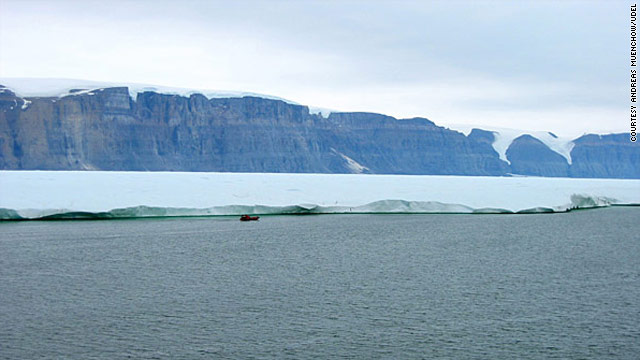 A piece of ice four times the size of Manhattan island has broken away from an ice shelf in Greenland, according to scientists in the U.S. The 260 square-kilometer (100 square miles) ice island separated from the Petermann Glacier in northern Greenland early on Thursday, researchers based at the University of Delaware said.
A piece of ice four times the size of Manhattan island has broken away from an ice shelf in Greenland, according to scientists in the U.S. The 260 square-kilometer (100 square miles) ice island separated from the Petermann Glacier in northern Greenland early on Thursday, researchers based at the University of Delaware said.
The ice island, which is about half the height of the Empire State Building, is the biggest piece of ice to break away from the Arctic icecap since 1962 and amounts to a quarter of the Petermann 70-kilometer floating ice shelf, according to research leader Andreas Muenchow.
"The freshwater stored in this ice island could keep the Delaware or Hudson rivers flowing for more than two years. It could also keep all U.S. public tap water flowing for 120 days," Muenchow said.
Muenchow's team is studying ice in the Nares Strait separating Greenland from Canada, about 1,000 kilometers south of the North Pole.
Satellite data from NASA's MODIS-Aqua satellite revealed the initial rupture which was confirmed within hours by Trudy Wohlleben of the Canadian Ice Service, according to the University of Delaware website. Muenchow said the island could block the Nares Strait as it drifts south, or break into smaller islands and continue towards the open waters of the Atlantic.





 Republicans are attempting to exempt some major polluters from paying for Pfas “forever chemical” cleanup. If...
Republicans are attempting to exempt some major polluters from paying for Pfas “forever chemical” cleanup. If... A powerful winter storm swept across California on Wednesday, with heavy rain and gusty winds.
The storm...
A powerful winter storm swept across California on Wednesday, with heavy rain and gusty winds.
The storm... Forecasters say the first snow storm of the season to take aim at major Northeast cities...
Forecasters say the first snow storm of the season to take aim at major Northeast cities...






























